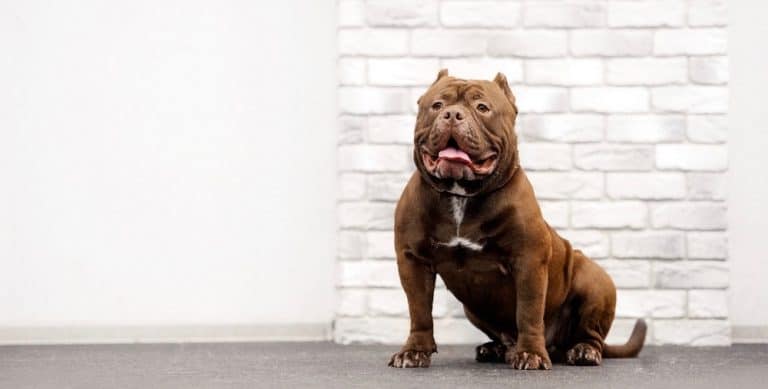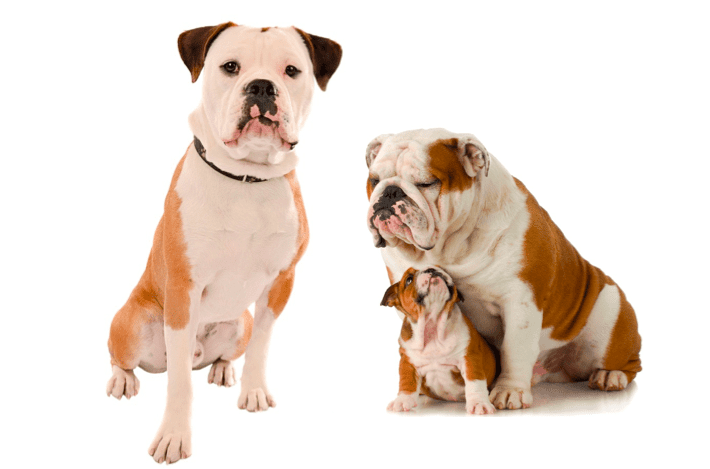Which Dachshund Is Best For You And Your Lifestyle?: Miniature Or Standard
There are some dog breeds that you can recognize with a simple glance, the dachshund is one of them.
These breeds have such clear traits and characteristics that they are simply unmistakable, so much so that you can recognize dachshund traits in mixed breed dogs.
If you have rescued a dog from the shelter, then there is a good chance that you might be wondering what breed they are.
If they have a long back, or super short legs, you might be wondering if they are part dachshunds. The chances are that they are.
Dachshunds are beautiful dogs that are full of character, so if you are thinking of adding a dog to the family, it is understandable that you might be thinking about a dachshund.
In this guide, we’ll be taking a look at both standard and miniature dachshunds to find out if they are right for you and your lifestyle. So, if you want to find out more, keep on reading!
What Is The Difference?
First things first, let’s take a look at what the difference is between a miniature dachshund and a standard dachshund.
Well as the name suggests, these are both types of dachshund dog. These dogs are famous for their long bodies and short, stumpy legs.
They do look a little funny sometimes, simply because their backs are so much longer than some other breeds.
It is these long backs that have caused these dogs to often be referred to as “sausage dogs”. So, what is the difference between a standard and a miniature dachshund?
As you would expect, a standard dachshund is standard. They usually weigh between 16 and 32 pounds, and typically measure no more than 12 inches in height.
They are considered to be a small to medium sized dog breed, and are, perhaps, the most common type of dachshund out there.
In contrast, the miniature dachshund is miniature. It is considered a toy breed, and is essentially just a smaller version of a standard dachshund.
Miniature dachshunds look incredibly similar to standard dachshunds, they just tend to be smaller in size overall.
Miniature dachshunds tend to weigh less than 11 pounds, and will measure around 5 to 6 inches in height.
Dachshunds come in a variety of different coloring and coat types. They may have smooth fur, wire-haired fur, or long-haired fur.
Their fur may also come in a wide range of colors from black to tan to cream. These coloring and coat types can be the same across both miniature and standard dachshunds.
Size Comparison
There are a couple of different sizes of dachshund. In this guide, we will be comparing standard and miniature dachshunds, but there are actually two other sizes of dachshund that we need to briefly mention. They are tweenie dachshunds, and rabbit dachshunds.
Standard Dachshunds
As we have said, standard dachshunds are essentially the original breed standard.
They measure no higher than 12 inches in height, but usually average around 9 inches.
They also tend to weigh anywhere between 16 and 32 pounds in weight, with male dachshunds being heavier than females.
Miniature Dachshunds
Also, as we said earlier, miniature dachshunds are essentially just miniature versions of standard dachshunds.
They are considerably smaller, and only measure around 5 to 6 inches in height.
In addition, they also weigh less than 11 pounds in weight. Again, male miniature dachshunds tend to be bigger than females.
Tweenie Dachshunds
As you would likely expect, tweenie dachshunds are a type of dachshund that is mid-way between a standard and miniature dachshund.
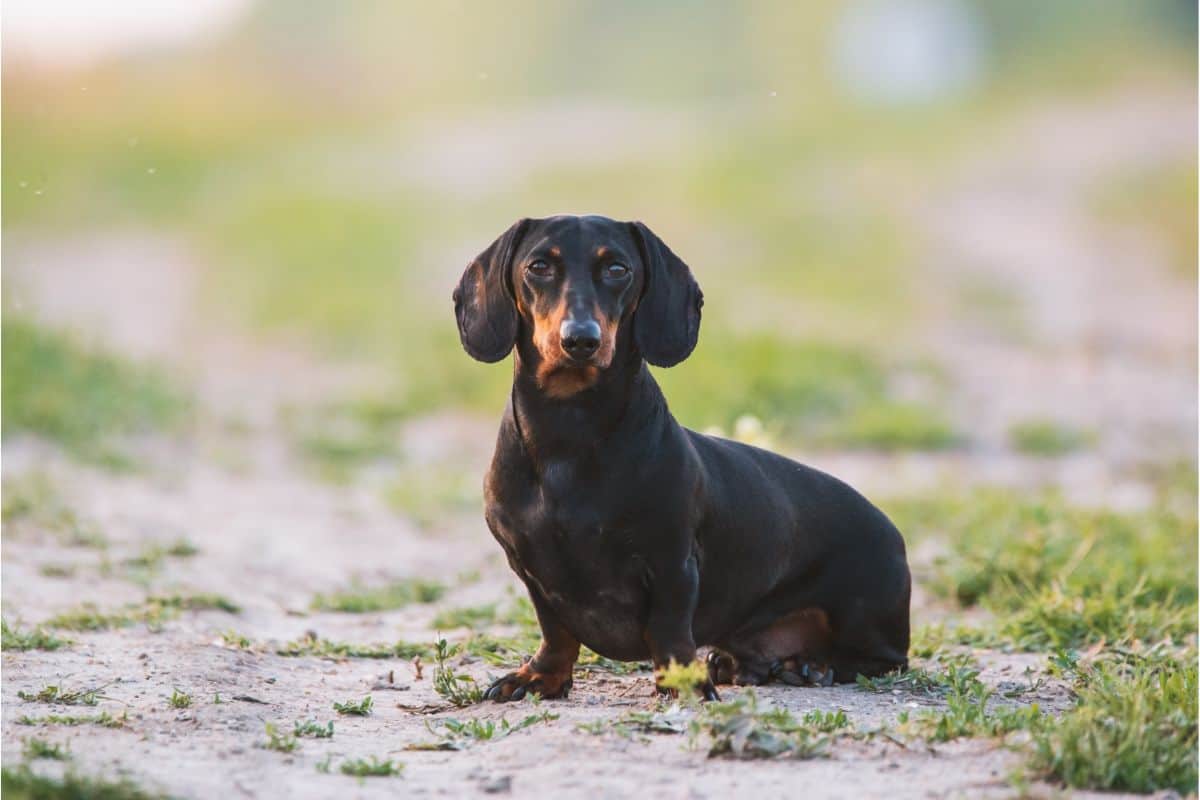
They are larger than miniature dachshunds, but smaller than standard dachshunds.
Typically, tweenie dachshunds will weigh between 11 and 18 pounds, and measure no more than 8 inches in height.
Rabbit Dachshunds
Finally, we have rabbit dachshunds. You might find this unbelievable, but rabbit dachshunds actually weigh even less than miniature dachshunds.
They are the smallest breed of dachshund out there, and they are a lot rarer too.
These dachshunds tend to weigh between 8 and 11 pounds, and usually measure less than 6 inches in height.
A Brief Overview: Which Dachshund Is Best For You And Your Lifestyle?
Miniature Dachshund
Miniature dachshunds tend to be the best dog for families who plan to only have one dog.
This breed of dog can be very suspicious of other dogs, so it is best to keep them as an only dog.
They do not need a lot of exercise, so they are well suited to those who lead busy lifestyles, and in particular are good for families with older children, or households without children.
Of course, there is no perfect type of home for a miniature dachshund, and most dogs will easily adapt to any situation.
However, this is the type of home where miniature dachshunds tend to thrive.
Standard Dachshund
Standard dachshunds are a bit sturdier than miniature dachshunds, and that is why we would say this type of dachshund is better suited for families with children.
Children can often accidentally play rough with dogs, so a standard dachshund will be able to handle this better than a miniature dachshund.
A standard dachshund will be suitable for most families. But if you are a household with children, we would recommend choosing a standard dachshund over a miniature.
Miniature Vs Standard Dachshund
Now that we have taken a brief look at the difference between these two types of dachshund, let’s take a look at this in more detail.
So, let’s take a look at multiple different breed categories to help you decide which one is best for you and your lifestyle.
Breed History
First, let’s dive right into the breed history of both miniature and standard dachshunds.
The original type of dachshund is the standard dachshund, and this breed was established during the 1500s in Germany.
While dachshunds are very much show dogs today, they were originally bred to hunt badgers.
Standard dachshunds are a similar size to badgers, so they were able to follow these tunneling animals into their tunnels when hunting.
This meant that dachshunds were a lot more successful in their hunts than other dog breeds that were bred to hunt.
Traditionally, standard dachshunds would have had longer legs than they have today, and these legs were excellent for digging and burrowing into the dirt after prey.
It isn’t known exactly when miniature dachshunds became a recognized breed. However, these dogs were also originally bred for hunting.
While standard dachshunds would be used to hunt bigger prey, such as badgers, miniature dachshunds were bred to hunt squirrels and rabbits.
Over time, both of these breeds evolved into companions, rather than hunting animals, and by the time they were brought to the USA in the late 1800s, these dogs were almost exclusively used as companions.
So while they have a rich history of hunting in other countries, in America, the breed history of these dogs is almost exclusively associated with companionship.
Appearance
As we said earlier, dachshunds come in a wide range of shapes and sizes.
We have already discussed the size difference between standard and miniature dachshunds in a lot of detail, so in this appearance section, let’s focus on the fur of dachshunds.
Both standard and miniature dachshunds can look incredibly different to one another depending on the type of fur that they have, and the color of said fur.
There are three types of fur that your dachshund may have: they may be smooth-coated, wire-coated, or long-coated.
On top of different types of fur, your dachshund may also have different colored fur.
There are a couple of different colorings of dachshund, and these range across both standard and miniature dachshunds.
There are lots of different color combinations that your dachshund may be.
One of the most common color combinations is black and tan, and this is one of the most famous color combinations for dachshunds. However, they can come in other colors too, including:
- Black and cream
- Chocolate and tan
- Fawn and cream
- Solid red
- Dapple blue
- Solid fawn
- And lots more…
As we have said, both miniature and standard dachshunds can have these color patterns.
So, the appearance of your dachshund, in terms of color and fur-type, will not influence which specific dog is better for you and your lifestyle.
Health
Something that often influences people’s decisions when it comes to buying a dog is any potential health concerns that dog could have in the future.
Of course, there is no way of knowing what ailments might affect your pet dog, and many dogs will lead healthy lives overall.
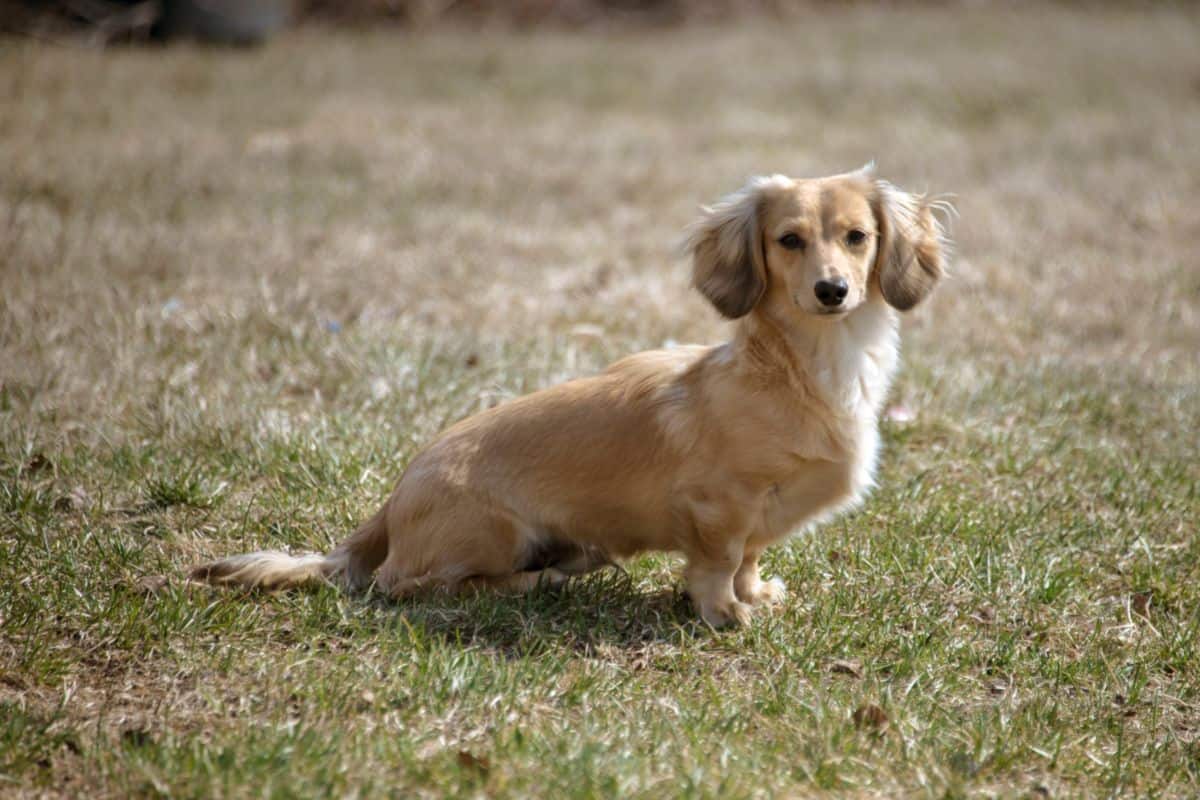
However, one of the benefits of purchasing a pedigree dog is that it can give you a rough idea of health problems that could occur throughout your dog’s life.
Unfortunately, there are a number of health issues that could affect your dachshund, and these health issues span both miniature and standard dachshunds.
So, health concerns likely will not influence whether you purchase a standard or miniature dachshund, instead they are likely to influence whether you purchase this breed overall.
However, let’s take a look at some of these potential issues to help you decide if a dachshund is right for you.
As you may expect, the area of your dachshund’s body that is likely to cause them the most problems is their back.
Dachshunds are famous for their long bodies, and sadly it is their long spines that are most likely to cause them issues.
In particular, they can often develop a condition known as IVDD in their backs.
IVDD stands for In vertebral Disc Disease and it is thought to affect around 25% of dachshunds at some point in their lives.
To put this into perspective, IVDD is very similar to a slipped/herniated disc in humans, so the symptoms are very similar.
These include back pain, reduced mobility, occasional numbness, and in extreme cases, paralysis.
Many dachshunds will experience IVDD due to their genetics, but it is possible that this condition may appear as a result of an accident or injury.
All in all, 1 in 4 odds aren’t ideal but it does mean that there is a fair chance that your dog will not develop this condition during their lifetime.
However, before you purchase a dachshund, you should be aware of this condition and the veterinary bills that you may have to pay should your dog develop it during their lifetime.
Temperament
One of the biggest factors to consider when purchasing a new dog is the temperament of that dog.
There is no guaranteeing exactly what temperament your dog will have because all dogs are different.
However, most pedigree dogs are bred with temperament in mind. Especially dogs which have been bred to become pets, rather than working dogs. So what temperament do dachshunds usually have?
There is a common misconception that little dogs can be snappy, so you might expect miniature dachshunds to have bad temperaments in comparison to standard dachshunds.
However, this isn’t the case. In fact, there is very little difference in temperament between miniature and standard dachshunds.
Generally, dachshunds have very loving temperaments. These little dogs are affectionate, incredibly loyal, and very alert too.
They are great watch dogs, and this can really help you feel safe when your dachshund is around.
If anything seems off or strange, your dachshund will pick up on this and warn you.
These dogs are great, and adding a dachshund to the family will almost always be a good thing.
However, it is worth noting that these dogs are very stubborn. Like many breeds, dachshunds are notoriously stubborn, and this can make training them a little tricky.
While these dogs are very loyal, they are not always the most obedient, and you will often find your dachshund ignoring your commands.
Often stubbornness in dogs is something that can be trained out if you start teaching them skills and tricks when they are young, so it shouldn’t be enough to deter you from this breed.
However, if you want a dog that can teach you lots of tricks, you should consider a Labrador or German Shepherd instead.
Agility
That leads us straight onto our next category, and that is agility. All dogs need exercise, so if you plan on adding a dog to the family, you need to have the time to take them on regular walks.
However, if the amount of time that you have to walk your dog is limited, there are some dog breeds that require less walking.
So how do miniature and standard dachshunds compare in terms of agility and fitness?
Well, if you want a dog that really does require the bare minimum in terms of exercise, then a miniature dachshund is the best choice for you.
Throughout the entire day, miniature dachshunds only require around 30 minutes of exercise (45 minutes maximum), so you only really need to take your miniature dachshund on one short walk a day to keep them happy.
However, it is worth noting that standard dachshunds don’t really require that much extra exercise.
Generally, a standard dachshund will require around 60 minutes of exercise a day.
This is double the amount that a miniature dachshund requires, but in comparison to some other dog breeds it is still pretty low.
While we have measured exercise in terms of minutes, it is worth noting that the type of exercise may influence how much exercise your dog needs.
Remember, dachshunds have very short legs, so running is a lot more strenuous than walking.
So a very short burst of running can really help tire your dachshund out. It is also worth noting that a dachshund, both miniature and standard, really isn’t the best choice if you want your dog to go jogging with you. Think about getting a larger dog instead.
Training
We briefly mentioned training earlier in reference to the stubborn nature of dachshunds, but let’s take a closer look at this.
Is there any difference between training a standard dachshund and a miniature dachshund?
In short, no there isn’t. So no matter whether you have a standard or miniature dachshund, training them will not be easy.
These dogs are notoriously stubborn and very difficult to train. This isn’t because these dogs are stupid.
In fact, it is because these dogs are so intelligent. Dachshunds are smart enough to ignore your commands completely, even when they understand what you are saying. With these dogs, stubbornness simply overrules the need to please.
Unfortunately, when it comes to dachshunds, it is important that you have the ability to exert physical control over them.
By this, we simply mean that it is important that you can control them on a lead, because it is likely that they will not listen to commands such as “stand”, “heel”, or “stop” while you are out walking.
If you cannot control your dog, then it could be very dangerous.
Obedience training in dachshunds isn’t completely impossible. If you have enough time, effort, and, most importantly, patience, then you will likely be able to do this.
It will take a lot longer to train a dachshund than other dog breeds, but the results are definitely worth the hard work and effort.
But before you take on this challenge, you really need to consider if you have the time to dedicate to training your dachshund, or if you would be better off choosing a breed that picks up commands quickly.
Grooming
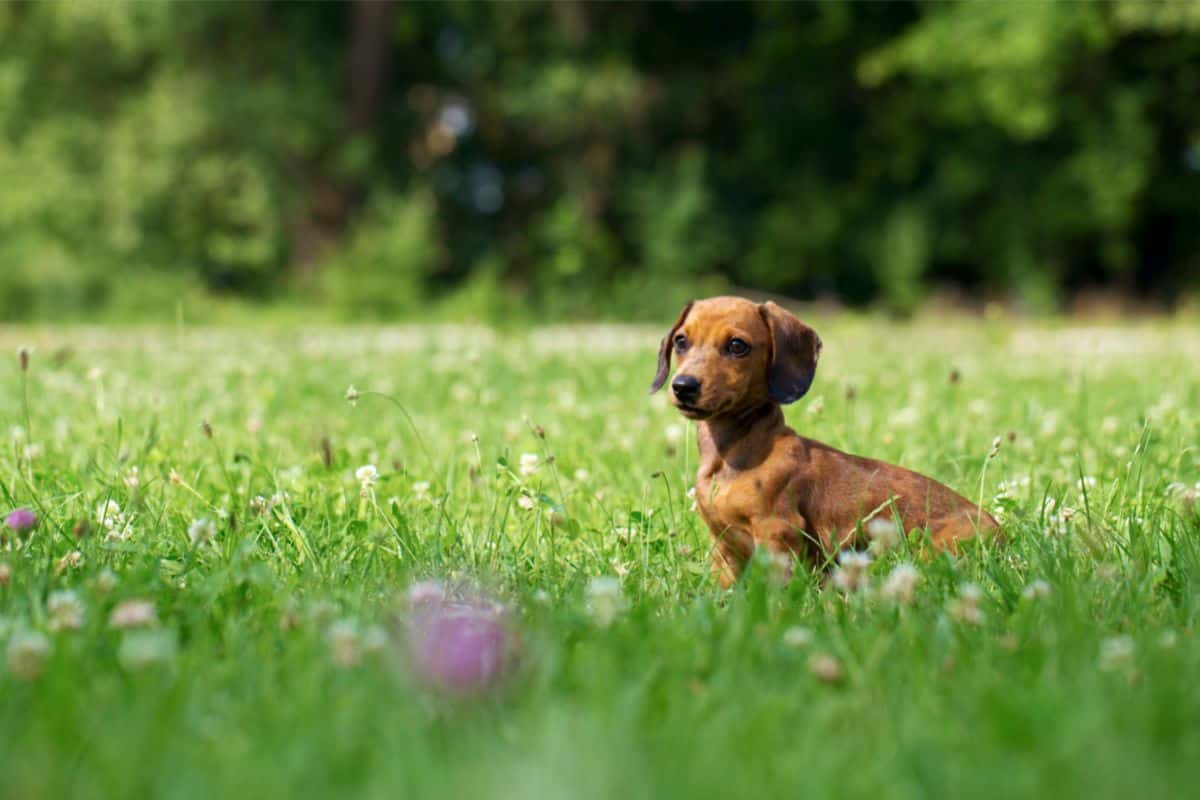
All dogs shed. Even dogs that are hypoallergenic will shed fur if a rigorous grooming schedule is maintained.
So it goes without saying that the size of your dachshund isn’t going to affect the grooming of your dachshund.
However in terms of shedding, you should expect your standard dachshund to lose more fur than a miniature dachshund, for obvious reasons.
Shedding is moderate in dachshunds. However, it is impacted by the type of coat that your dachshund has.
In particular, you are likely to notice more shedding if you have a long-coated dachshund, rather than a smooth-coated dog. You will generally notice more shedding with wire-coated dachshunds than smooth-coated dachshunds too. But what about grooming?
As we have said, grooming isn’t impacted by the size of your dachshund, but it is impacted by the type of fur that they have.
Smooth-coated dachshunds are generally very low maintenance, whereas both wire-coated and long-coated dachshunds will require a lot more work. This will include regular brushing and trips to the groomers too.
Both long-coated and wire-coated dachshunds will require brushing around 3 to 4 times a week.
In addition to this, they will also require trips to the groomers around 3 to 4 times a year to get their coat stripped. This will prevent it matting and become uncomfortable and damaged.
However, grooming isn’t limited to your dachshund’s fur. In addition, you will also need to keep their ears nice and clean.
Dachshunds are prone to ear problems, and often get foreign objects stuck in their floppy ears.
So it is important to regularly check your dog’s ears, and to regularly clean them too to ensure that your dachshund stays healthy.
However, checking your dog’s ears will not be impacted by their size, so this is essentially a non-starter in terms of the miniature vs standard dachshund argument.
Cost
The cost of dogs is a tricky one to speak about because it is constantly changing. In recent years, the cost of dogs has increased significantly, but it is likely that this will reduce in the future.
So, we can only really give average numbers when it comes to the cost of purchasing a dachshund.
However, one thing that we can say for certain is that miniature dachshunds tend to be significantly more expensive than standard dachshunds.
This is true of most toy breeds. While you should expect the starting price for a standard dachshund to start at around the $450/500 mark, the starting price for a miniature dachshund is $600 at minimum, and you can rarely get a dog at this price.
So, if cost is a big influence in your decision between standard and miniature dachshunds, then it is probably best to opt for a standard dachshund.
Popularity
Unfortunately, it is impossible to say whether standard or miniature dachshunds are more popular.
Most polls will list these dogs alongside one another, so it is difficult to say how many votes were for standard dachshunds, and how many votes were for miniature dachshunds.
However, as a whole dachshunds are incredibly popular, so if you want to get a dog that your friends and family will love, then a dachshund could be a good choice.
Life Expectancy
Finally, let’s wrap up this comparison by looking at the category that nobody really wants to think about, and that is life expectancy.
All dog owners wish that their dogs could live forever, and the thought of them leaving us and passing on truly is heartbreaking.
However, it is still important to consider life expectancy when purchasing a dog for all sorts of reasons.
The main reason behind this is so that you can prepare yourself.
You can consider if the average life expectancy (even though there is no guarantee that your dog will live this long) is enough for you, and also if you have the ability to look after your dog for this length of life.
This is especially important if you are thinking of buying a dachshund puppy.
Generally speaking, smaller dogs live longer than larger dogs. This is why Great Danes have one of the shortest life spans of all the different dog breeds that exist. Both standard and miniature dachshunds are considered small breeds, so if you are purchasing one as a puppy, you should expect them to live fairly long lives.
Due to the principle that smaller dogs live longer lives, most of the time miniature dachshunds will have longer lifetimes than standard dachshunds.
Generally, standard dachshunds will live for around 12 to 14 years, while miniature breeds can live up to 16 years.
Of course, these are just averages, and you might find that your dog lives longer or shorter than expected.
Frequently Asked Questions
Which Dachshunds Are the Calmest?
Generally, whether, or not a dachshund is calm doesn’t seem to be linked to their size. Instead, it appears to be linked to their coat.
Long-haired dachshunds tend to be the calmest, so if you want a nice, peaceful dachshund to add to your family, you should choose one of these.
In contrast, wire-coated dachshunds tend to be the most yappy and hyperactive. This is because the terrier breed was introduced into their lineage in order to get the wire-coat.
Smooth-coated dachshunds tend to be a good balance between the two.
Do Mini Dachshunds Bark A Lot?
As a breed as a whole, dachshunds are yappy little dogs. This is because they were originally bred to hunt, so barking is in their nature.
When you first hear your dachshund bark, you might be surprised by how loud they are.
These dogs might be small, but they pack a very loud bark, and this is part of what originally made them great hunters.
Do Dachshunds Like To Cuddle?
If you are looking for a lap dog, then you really are barking up the right tree with a dachshund.
These dogs are incredibly loyal to their owners, and they require very little exercise.
This means that they spend a lot of their time relaxing and cuddling their owners. If there is one thing in the world that dachshunds love, it is cuddling.
Are Mini Or Standard Dachshunds More Prone To LVDD?
As a breed, 1 in 4 dachshunds tend to experience LVDD. So, if you are considering purchasing a dachshund, this is something that you really need to consider.
LVDD can require an operation to resolve the problem, and this can be incredibly costly. So are standard or miniature dachshunds more prone to this?
Well, it would seem that the size of the dachshund doesn’t have too much of an impact on whether, or not, they develop LVDD.
Instead, it seems to be the coat-type that has a big influence. We say this because the highest prevalence of LVDD is in standard short-coat dachshunds, while the lowest is in wire-coat dachshunds. So it is worth bearing this in mind when buying a dachshund.
However, it is also worth noting that factors such as age, and whether, or not, your dog is neutered will also influence this.
Summary
In short, it is impossible to say whether a miniature or standard dachshund is better because they are both amazing dogs.
However, the information in this guide should help you decide which type of dachshund is best for you. We hope you have found it helpful. Thank you for reading!


